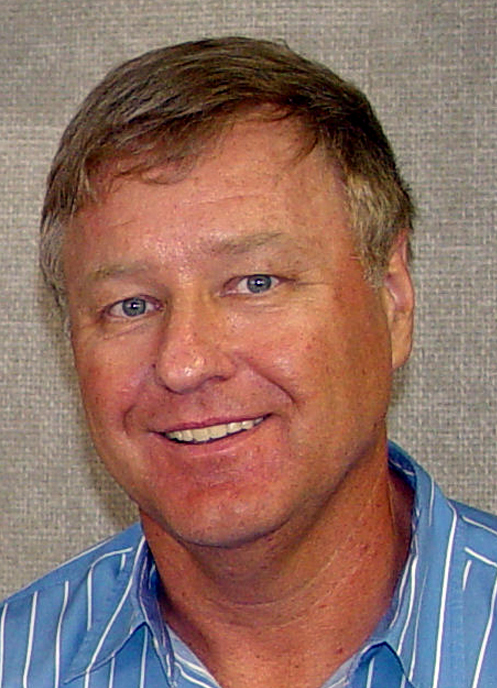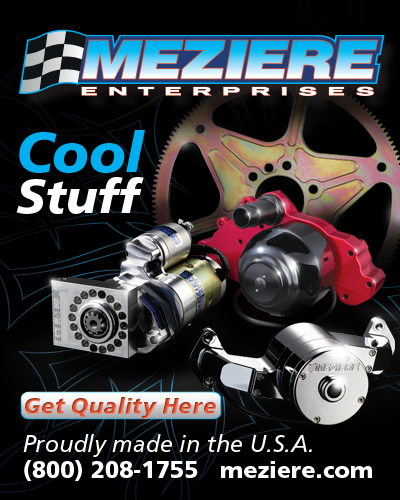DRAGS, DOLLARS & SENSE: NOT ALL INK IS GOOD INK
Fri, 2011-09-30 18:54

Kenny Bernstein couldn’t sell a sponsorship if his life depended on it. Jeg Coughlin Jr. was just an average Pro Stock driver. Every ticket for every Countdown race has been sold.
Katie Couric is replacing Paul Page in the TV booth. Bob Tasca III is buying NHRA and moving the offices to Rhode Island. TMZ has video of Melanie Troxel eating at McDonald’s.
What the . . . ??? !!!
To the above list of bogus-as-a-red greenback sentences, add this:
Any publicity is good publicity.

Kenny Bernstein couldn’t sell a sponsorship if his life depended on it. Jeg Coughlin Jr. was just an average Pro Stock driver. Every ticket for every Countdown race has been sold.
Katie Couric is replacing Paul Page in the TV booth. Bob Tasca III is buying NHRA and moving the offices to Rhode Island. TMZ has video of Melanie Troxel eating at McDonald’s.
What the . . . ??? !!!
To the above list of bogus-as-a-red greenback sentences, add this:
Any publicity is good publicity.
That old canard seems to be a favorite of drag racing fans, perhaps repeated out of frustration with the mainstream media’s absence of attention to the straight-line sport. I understand and agree the Full Throttle series is under-covered by the general press which, otherwise, seems obsessed with society’s colorful characters and Pentagon-sized personalities. Columnists who haven’t troubled themselves to talk with Force, Bernstein, Jack Beckman, Ron Capps, Antron Brown, Don Garlits, Don Prudhomme, Shirley Muldowney or any of NHRA’s many other fascinating folks have done their readers an epic disservice.
Still, that doesn’t mean any pub is “good” pub. No disrespect intended, but I’ve noticed the people who usually trot out this line have never sold a sponsorship or spent time in a corporate conference room, learning what a sponsor does -- and doesn’t -- want from a race team.
Domestic diva Martha Stewart maybe got a billion dollars of worldwide news coverage when she wound up on the wrong side of the law a few years ago. I guarantee you she’d have happily passed on that, however, given the damage to her reputation, brand and business. Not to mention the five months spent cooling her high heels in a federal prison -- a different sort of door slammer, for sure.
I mention this since there’s been some recent angst about NHRAers becoming too vanilla in their TV interviews. Now, I agree, they should express and emote for the cameras and microphones after every round -- win or lose -- and care who’s in the other lane.
Truthfully, though, it bothers me more when a driver hides under a cap pulled down over his/her ears and behind sunglasses that make the Grand Canyon look like a tea cup. What’s next? A surgical mask? (With sponsor logo, of course.) Ours is a visual society -- look who made the cover of People magazine this week! -- and we, the people, want to SEE our heroes.
The optics are more important than the utterings. Just ask any of the presidential candidate’s spin doctors.
A polite and professional reminder of interview dos-and-don’ts is fine. A few drops of verbal Tabasco to spice-up the show is OK, especially during the Countdown. But I worry about racers being steered off-course by some who sometimes have other agendas, encouraging the equivalent of throwing gasoline on emotional fires.
A number of years ago, I was at dinner with a young driver (navigating him down the PR road) and an ESPN producer. (Not the one currently working the NHRA cablecasts.) “Show your emotions,” said the TV guy to the rookie. “If you’re angry, go ahead and curse. I would encourage you to do that. I’ll put it on the air.”
I made d*** sure that never happened.

Sports Illustrated, April 24, 1989. Pic at left shows Al Unser Jr. being interviewed and in the right photo I'm at the far left with a couple of CART officials between me and a charging Mario
If you don’t want to take my word, based on 40-plus years of PR/journalism experience, then just go ask some sponsors reps. Meanwhile, I’ll share a real-life story.
In the closing laps of the 1989 Long Beach Grand Prix, Al Unser Jr. punted Mario Andretti out of the lead. An angry Andretti climbed from his car and stepped toward Unser in victory lane. As assorted photographers and crew members crowded around, Shelley Unser saw what was happening, and reached out to warn Al as he was being interviewed by Jack Arute on ABC.
As the Newman/Haas team's PR director -- with the full meaning of the words "public relations" at the front of my mind, especially as it related to the image of the team's primary sponsor, Kmart -- I placed myself directly in Mario's path. So did a couple of CART officials. I got spun-around in the crowd but stood my ground as best I could, arms extended backward in a restraining posture.
Mario had every right to be furious. What Unser did needed to be addressed -- but with the chief steward present, and out of public view. After a bit of yelling, that's exactly what happened.
That week’s Sports Illustrated had a one-page story describing the above scene, and an accompanying photo showed me playing the role of human roadblock. A few days later, I received an unexpected package. It was the SI page, in a gold frame, which I still display on my office wall. Enclosed was a letter from a senior Kmart executive. While the corporate VP expressed great respect for Mario, the letter said, "We are grateful to you" for helping to "maintain Kmart's image and customer friendly reputation."
Sure, that was a long time ago, but some things remain true over the many years.
With the U.S. economy running like a Top Fuel engine on seltzer, it’s a brave driver, indeed, who is going to get rough or rowdy or do a Whit Bazemore just for the amusement of those in the TV production compound. While John Force’s sponsors may allow him to get away with certain things, he’s the exception to today’s sports marketing rule.
I bet Tony Schumacher understands what KIND of publicity the U.S. Army wants. I’m sure Beckman knows Valvoline’s views on this issue. I have no doubt Tasca is in synch with the thoughts of Ford and Motorcraft and Quick Lane.
The bottom-line here is there are different sorts of publicity. Except in a few narrow categories (like the edgy energy drinks, but they aren’t playing in NHRA’s sandbox because of Full Throttle’s series entitlement) most corporations don’t need the hassle associated with “bad” publicity. The drivers -- at least, the wise ones -- know it.
No. Any publicity is not good publicity.
And Atco isn’t going to host the U.S. Nationals.
| {loadposition feedback} |
Categories:





































